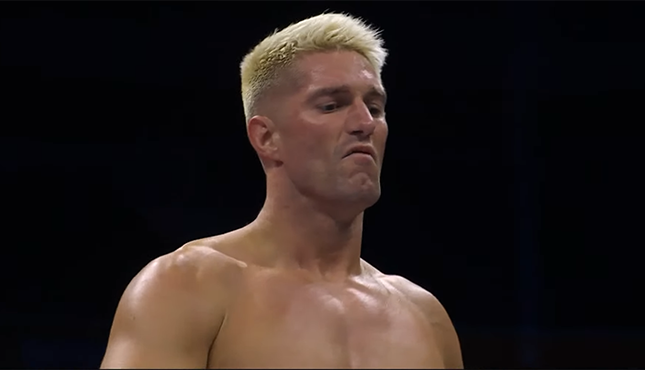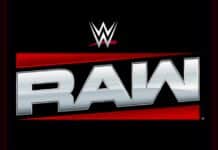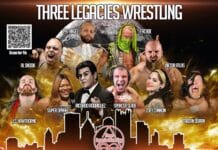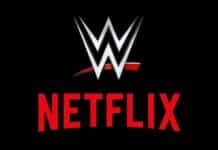
New Japan Pro Wrestling, one of the most storied organizations in the entire pro wrestling industry, held a pair of signature Tokyo Dome events last week, with the trademark Wrestle Kingdom show on January 4th and then followed that with Wrestle Dynasty, a co-promoted event with All Elite Wrestling, the next day. The working agreement between the two sides has been somewhat odd over the past few years, particularly because the majority of the “agreement” saw Tony Khan cherry-pick most of the top talent from the Japanese league. Don’t get me wrong, this wasn’t a “talent raid,” that was a term developed by Vince McMahon to spin the narrative of the Monday Night war when he found himself on the losing side of the ratings battle for the first time as a promoter during that era. Tony Khan’s acquisition of talent was simply that he offered more money than New Japan could reasonably counter offer for, and the talent decided to take the money and the bigger platform of national television in the United States to sign with AEW.
That’s not a talent raid, that’s just capitalism.
Sure, it’s going to be an uphill proposition for NJPW regardless because they can’t compete with a billionaire, or the expanded revenue of the American major leagues, despite being the biggest promotion in Japan. That’s not a jab, either. New Japan has a tremendous history and some of the greatest bouts in the history of the sport took place in an NJPW ring, but the bottom line is, the New Japan product was always designed to sell toward its domestic market, both culturally and with its presentation so it simply doesn’t have the resources of a global wrestling promotion.
In short, if WWE wants a New Japan wrestler, and in the modern era, even more so now with Triple H running the company with better opportunities given to foreign talent, more often than not, the TKO corporation can land the free agents. WWE is going to pay them top money, knowing that they are asking a performer with a top spot in their native country to completely relocate to the United States. There was a reason Shinsuke Nakamura was content to reportedly surface when he was off television for several months prior to the US title push. At the same time, WWE is a billion dollar corporation because it maximizes its return on investment the vast majority of the time so if Tony Khan is willing to overpay performers just to add them to his roster, and we’ve seen several examples of this, WWE brass won’t pay more than they think they can generate promoting a competitor for their contract.
That puts New Japan in a tough spot, as the WWE can offer top money and the potential for a major spot in the biggest sports entertainment organization in the world, which ultimately means even more money, or Tony Khan will agree to sign some of the Japanese stars for more than New Japan could realistically offer given the organization’s economic status. There was a time when the WWE would’ve been seen as somewhat of a step down for Japanese talent, especially during its heyday or as recently as the low point of the business there in the early-2000s. Basically, the sports-based performers weren’t going to risk being saddled with a hokey gimmick, or working tag matches TL Hopper on an episode of Superstars, all due respect to Tony Anthony. Plus, Jinsei Shinzaki’s stint in the WWF was just under a year and a half, with a notable series of matches against Bret Hart as the only portion of his tenure that had any importance, despite his stellar skill set. Also in 1994, there was a very memorable, but very brief working agreement with the All Japan Women’s group. Again, despite some tremendous talent, they weren’t truly presented or featured to the level of their in-ring ability.
Within the modern era, the old wrestling troupe of limitations with foreign talent, especially those that don’t already speak fluent English, is almost considered an antiquated concept. So, Japanese talent appear to be more receptive to importing their careers to the United States. Of course, since Tony Khan is a longtime subscriber of The Wrestling Observer newsletter, he understands the value and sometimes overvalues the top-tier Japanese talent.
The combination of those factors have made it increasingly tougher for the New Japan office to replenish its talent pool within the past decade or so. AJ Styles and Nakamura were originally signed away with The Good Brothers in 2016 before the launch of All Elite Wrestling saw the temporary exits of Kenny Omega, Cody Rhodes, The Young Bucks, and Adam Page in 2019. Within the past five years of AEW’s existence, Kota Ibushi, Shibata, Jay White, Okada, and others from the main event scene of New Japan were signed by Tony Khan.
Essentially, in some form or fashion, as soon as NJPW would reestablish it’s main event picture, some of those stars would be signed elsewhere. It’s not easy to create or develop money-drawing stars. As talented as most of the New Japan roster is with a higher standard of in-ring work, with a few exceptions, than some of the rosters in America because of the emphasize of the Japanese style, the bottom line is, major performers that can legitimately draw money are still very rare.
The pair of Tokyo Dome events were six and five hours respectively so to parse details on the matches would be too lengthy, but the broaden scope, both for the draw and the top bouts, can tell the story of the organization right now. Wrestle Kingdom, with Zack Sabre Jr. headlining against Shota Umino drew just under 25,000 fans. Wrestle Dynasty saw Sabre Jr. defend the IWGP belt against Ricochet, garnering just over 15,000 fans in the building. Umino is a solid performer, but the general notion is that he’s not a star yet. The numbers for Wrestle Kingdom more or less confirm that. Sabre Jr. is one of the most gifted technicians of his general, but if I had to guess, I’d say that he was only given a reign with the heavyweight championship based on the complete lack of depth on the current roster. I’m not surprised that his defense against Ricochet drew significantly less than the traditional dome event the day before. Make no mistake about it, the former WWE competitor is very talented, but is he truly a star? Would there be any reason for the fans in Japan to believe that he was actually going to win the title during a one-off appearance?
One of the good aspects of Wrestle Dynasty was that Kenny Omega returned to in-ring action after more than a year due to a life-threatening bout with diverticulitis at the end of 2023. I have to be honest, I was skeptical that Omega could return to top form, not just because of the intestinal issues, but also the several surgeries that he had to repair injuries that put him on the shelf for almost a year prior to that. Omega and Gabe Kidd had a tremendous bout that was less of the usual overly choreographed sequences that are often seen in the modern era and more of a physical contest that was designed to look more competitive during the match.
It remains to be seen how far Gabe Kidd can go up the ladder or if New Japan management would want to invest major stock into him this year, but I don’t think it would be unrealistic to consider the contest a potentially star-making performance for Gabe Kidd, even if he didn’t win the match.
I’m not sure if Gabe Kidd is going to get that type of push, or if that would truly help boost NJPW numbers, but again the attendance figures for the Tokyo Dome events revealed a diminished interest in the product, at least for live event tickets. Bushiroad, the parent company of New Japan Pro Wrestling, CEO Takaaki Kidani told Tokyo Sports during the post-event press conference that the goal is to draw 40,000 fans for Wrestle Kingdom next year. That’s a very lofty goal, especially because the company hasn’t drawn anything close to that number since before the pandemic. However, New Japan president, Hiroshi Tanahashi plans to retire at the Tokyo Dome next year so that might be enough to get to that type of attendance. The legendary grappler carried the company on his back when it was on the brink of collapse in the early-200s, but more than two decades in the ring have undoubtedly taken a toll on him so it’s a wise decision for him to retire. That being said, while the final bout for Tanahashi might be a major draw for the organization, how the NJPW office builds for the future remains to be seen. This might be too optimistic, but with the roster so bloated in AEW, maybeTony Khan could do the company a favor and send some of his talent that otherwise would only be wrestling occasionally in America to Japan for an extended period of time to add some depth to the roster.
What do you think? Share your thoughts, opinions, feedback, and anything else that was raised on Twitter @PWMania and Facebook.com/PWMania.
Until next week
-Jim LaMotta
E mail [email protected] | You can follow me on Instagram, Facebook, & Threads @jimlamotta89







